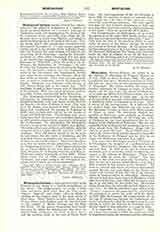

Montagnais Indians , Quebec, French for “Mountaineers”, the collective designation of a number of bands speaking dialects of a common language of Algonquian stock, and ranging along the shores of the St. Lawrence River and Gulf, from about the St. Maurice River to below Cape Whittle, and inland to about the main divide at the heads of the rivers. They are closely allied and considerably intermixed with the cognate Nascapee (q.v.), who wander generally farther inland in the interior of the Labrador Peninsula, but frequent the same trading and mission stations along the St. Lawrence. Among the Montagnais bands or tribes, when Champlain first met them at the mouth of the Saguenay, in 1603, were the Attikamegue, or “Whitefish”, about the head of the St. Maurice; the Kakouchac, or “Porcupine”, on Lake St. John; the Tadousac about the mouth of the Saguenay; the Bersamite, farther east; the Papinachois, north of the last-named; the Oumamiwek, farther east, along the St. Lawrence; the Chisedec, about the Bay of Seven Islands. They were without agriculture or pottery, subsisting entirely by hunting and fishing. Polygamy was common, with divorce at will, descent being held in the female line. Their dwellings, as well as their canoes, were of birch bark or brushwood. They were good tempered, patient, peaceable, honest, and musical under instruction.
The Montagnais obtained their first knowledge of Christianity at Tadousac, a French trading post. Regular missionary work was begun among them by the Recollet, Fr. Jean d’Albeau, in 1615. Ten years later the Jesuits were invited to help. Fr. Jean du Quen, S.J., established the mission at Tadousac in 1640; later, stations were erected by the Jesuits at Gaspe and Trois-Rivieres. The Iroquois raids drove them from the St. Lawrence, and a smallpox epidemic, in 1670, greatly reduced them, practically destroying the Attikamegue. In consequence, the Montagnais began to resort to the mission at Sillery, near Quebec. The whole tribe is now civilized and Catholic, with the exception of forty-eight officially reported (1909) as Anglican. They still depend mainly on the fur trade for subsistence, but also work at lumbering and the making of canoes, snow-shoes, and moccasins. A few of them are successful farmers. Apart from drunkenness, they are moral, devout, industrious, and said to be “improving every year”. Their largest settlements are at Pointe Bleue, on the west shore of Lake St. John, Bersimis, Seven Islands, Romaine, and Mingan. Their total number is probably at least 2500. Father Pierre Laure, S.J. (d. 1738), compiled a grammar, dictionary, and other works in the Montagnais language, most of which are still in manuscript.
JAMES MOONEY

